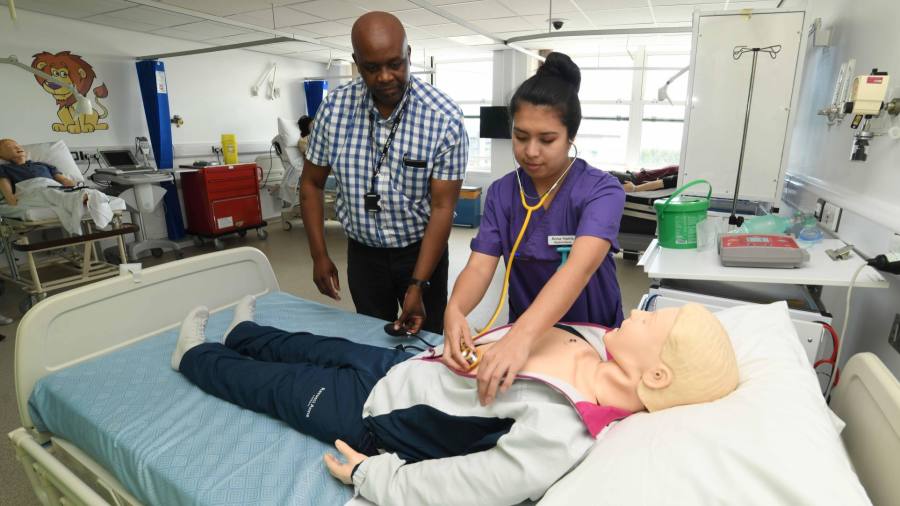
Receive free National Health Service updates
We’ll send you a myFT Daily Digest email rounding up the latest National Health Service news every morning.
A plan to provide about twice the current number of training places for doctors and nurses in England by the end of the decade has been unveiled by the NHS, as it attempts to tackle a staffing crisis amid record waiting lists for treatment.
Under the first long-term staffing strategy by the NHS for 20 years, medical school training places for doctors are due to double to 15,000 by 2031.
Training places for nurses and midwives are due to almost double, to 54,000, by 2031. GP training places are meant to rise by 50 per cent to 6,000.
The government has backed the NHS workforce plan with more than £2.4bn for additional education and training places over five years.
The NHS said the growing and ageing population, coupled with new treatments and therapies, meant that without action the number of additional staff needed would reach 360,000 by 2037.
Rishi Sunak, who has made cutting waiting lists one of his five key priorities, hailed “the largest single expansion in NHS education and training” in the health service’s 75-year history.
Chancellor Jeremy Hunt, who repeatedly pushed for an NHS workforce plan while serving as chair of the House of Commons health committee, said the proposals would “[take] us above current average staffing levels across the OECD”.
It would end the country’s reliance on expensive agency staff, he added. This would potentially save about £10bn between 2030 and 2037, said the NHS.
The health service employs about 1.4mn staff in England but is currently struggling with 112,000 vacancies.
Along with measures to ensure more existing staff can be retained, the NHS workforce plan could mean the health service has at least an extra 60,000 doctors and 170,000 more nurses by 2036-37.
Amanda Pritchard, chief executive of NHS England, said as demand for health services rose globally “this long-term blueprint is the first step in a major and much-needed expansion of our workforce to ensure we have the staff we need to deliver for patients”.
Wes Streeting, shadow health secretary, said the Conservatives had adopted Labour’s plan to train the doctors and nurses the NHS required.
But the government “should have done this a decade ago” and the announcement would take years to have an impact, he added.
In order to get trainees on to hospital wards and in GP practices sooner, the NHS will consult on reducing the length of medical degrees from five to four years.
One in six of all training places for clinical staff will be offered through apprenticeships by 2028, including for more than 850 medical students seeking to become doctors.
Anita Charlesworth, director of research for the Health Foundation, a research organisation, said the NHS workforce plan was focused on the actions that the health service itself could deliver but “one of the biggest factors for retention will be pay, terms and conditions”.
Amid continuing industrial action by doctors, it was vital there was a corresponding long-term plan to ensure competitive pay for health service staff, she added.
Andrea Sutcliffe, chief executive of the Nursing and Midwifery Council, highlighted the scale of staff shortages in social care.
“This plan for the NHS demonstrates that one is needed for social care more than ever before,” she added.
Matthew Taylor, chief executive of the NHS Confederation, which represents health organisations in the UK, said extra investment in infrastructure and technology was needed if the NHS was to achieve the level of productivity improvements envisaged under the workforce plan.
Sir Julian Hartley, chief executive of NHS Providers, which also represents health organisations, highlighted the “specific and significant staffing gaps” in mental health and community trusts.